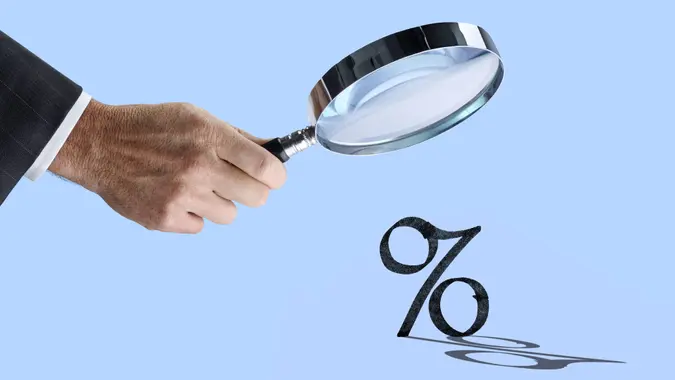5 Banking Changes To Make When Your Savings Hit $50,000

Commitment to Our Readers
GOBankingRates' editorial team is committed to bringing you unbiased reviews and information. We use data-driven methodologies to evaluate financial products and services - our reviews and ratings are not influenced by advertisers. You can read more about our editorial guidelines and our products and services review methodology.

20 Years
Helping You Live Richer

Reviewed
by Experts

Trusted by
Millions of Readers
It’s a significant milestone when a savings account hits $50,000, and it’s crucial to make thoughtful financial adjustments going forward. Addressing adjustments wisely and making decisions that align with long-term financial goals results in a better position to manage $50,000 in savings.
Here are five banking changes to consider when managing a bank account at this stage.
Move Money Into a High-Yield Savings Account
If the money is in a traditional savings account, it is losing out on potential interest earnings. A high-yield savings account will offer better interest rates, which will allow the money to grow more quickly.
“With interest rates still hovering around 3% to 4% for high-yield savings and money market accounts, moving cash into an account that earns compound interest can make a substantial difference in long-term growth,” said Mary Hines Droesch, head of product for consumer, business and wealth management banking and lending at Bank of America.
Josh Anderson, president and CEO at Eagle Legacy & Financial, added that, due to how easy it is to open a high-yield savings account, there’s really no reason to not take advantage of the opportunity.
“Rates are coming back down, but interest rates in high-yield checking and money market accounts are still in the 3% to 4% range,” he said. “This means just about anyone can keep up with inflation, and shopping online for the best savings account rates only requires a quick search.”
Diversify Beyond a Savings Account
Once a savings balance reaches $50,000, it’s wise to look beyond a savings account and diversify — at least with a portion of the money. Keeping all of the money in savings could limit its growth.
“Diversification doesn’t mean just stocks — it includes safer options, such as Treasury bonds, CDs and money market funds,” Anderson explained. “With higher interest rates, insurance products like annuities and cash value life insurance have also become more attractive.”
Establish an Emergency Fund
If the account holder doesn’t already have an emergency fund, using a portion of the $50,000 to get a head start is a smart decision.
“It’s important to build an emergency fund, because it serves as a financial safety net and insulates you from life’s unpredictability,” said Hines Droesch. “An emergency fund can help to cover unexpected expenses, like a sudden medical procedure, job loss or costly car repairs. You should aim to keep three to six months’ worth of living expenses in your emergency fund. Build toward your goal amount through small, consistent and manageable payments.”
Anderson recommended starting an emergency fund by setting aside $1,000 to $2,000. “Then, focus on saving and setting aside three to six months’ worth of expenses to cover bigger unexpected events, like the loss of a job, an injury or sickness or unexpected large expenses, such as replacing a roof or furnace in your home,” he added.
Maximize Tax Efficiency
With $50,000 in savings, start considering tax-efficient accounts to protect the money from unnecessary taxation.
“Maximizing tax efficiency with savings requires time, the right advice and the right vehicles,” Anderson said. “Given the uncertainty in today’s environment of ever-changing tax policy, one of the greatest comforts is having tax-free savings to pull from, especially in retirement.”
He mentioned Roth retirement accounts and cash value life insurance as options.
“Not only can a properly designed and funded cash value life insurance plan provide an excellent emergency fund, but it can also provide protections and tax-free income for retirement without the age restrictions and penalties of traditional retirement savings plans,” he explained.
Reassess Banking Fees and Perks
Once a savings balance reaches $50,000, the owner may qualify for better banking benefits.
Hines Droesch explained the following important factors to consider when choosing the best place for your checking and savings accounts.
“One oft-overlooked component is financial rewards; consolidating your accounts with one financial institution can help you gain access to loyalty programs,” she said. “Bank of America’s Preferred Rewards program, for example, rewards you for your activity across the bank, providing eligible members with benefits ranging from a credit card rewards bonus and savings account interest rate booster to discounts on home and auto loans and more.”
More From GOBankingRates
 Written by
Written by  Edited by
Edited by 























